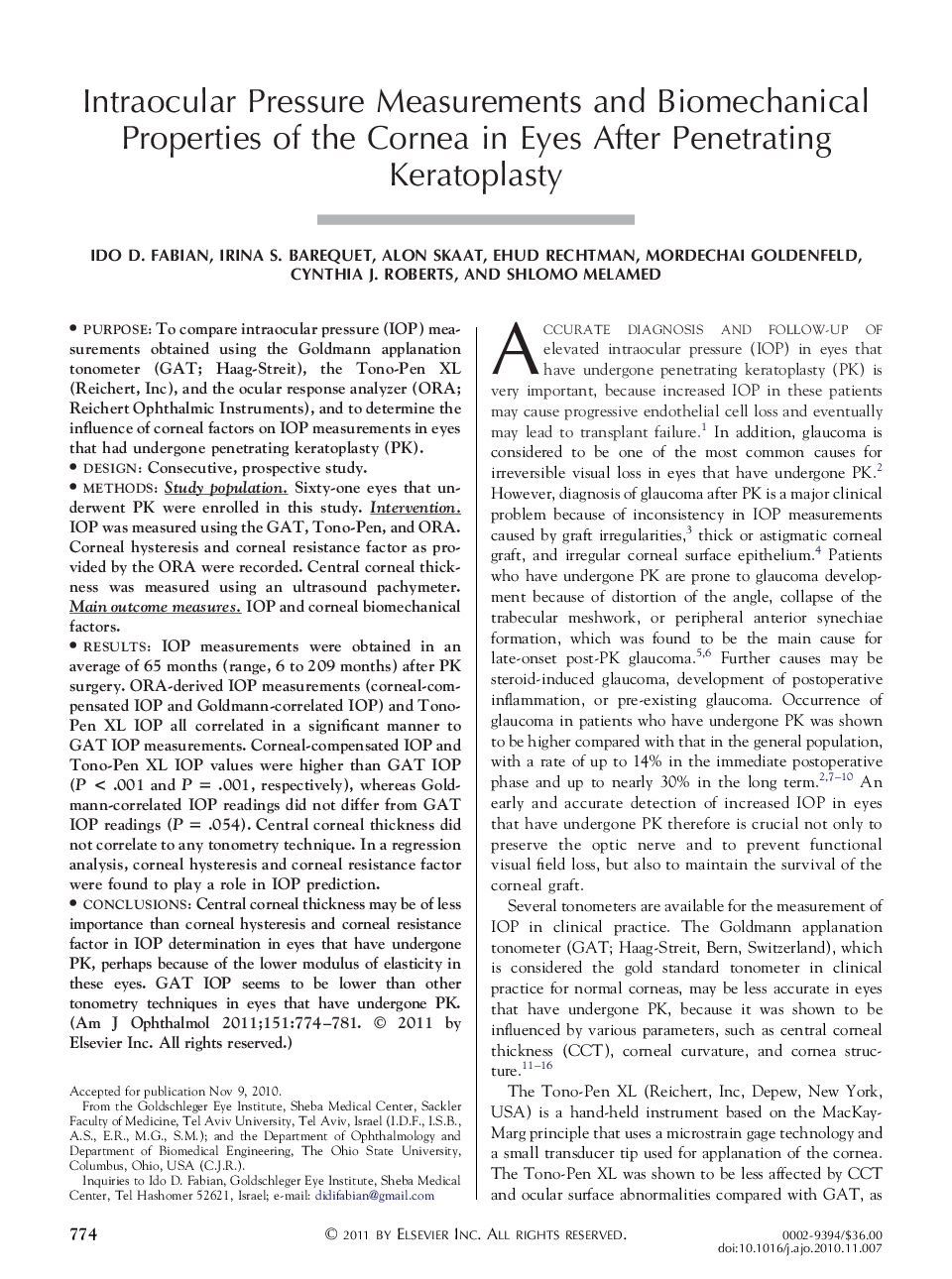| Article ID | Journal | Published Year | Pages | File Type |
|---|---|---|---|---|
| 4003186 | American Journal of Ophthalmology | 2011 | 8 Pages |
PurposeTo compare intraocular pressure (IOP) measurements obtained using the Goldmann applanation tonometer (GAT; Haag-Streit), the Tono-Pen XL (Reichert, Inc), and the ocular response analyzer (ORA; Reichert Ophthalmic Instruments), and to determine the influence of corneal factors on IOP measurements in eyes that had undergone penetrating keratoplasty (PK).DesignConsecutive, prospective study.MethodsStudy population. Sixty-one eyes that underwent PK were enrolled in this study. Intervention. IOP was measured using the GAT, Tono-Pen, and ORA. Corneal hysteresis and corneal resistance factor as provided by the ORA were recorded. Central corneal thickness was measured using an ultrasound pachymeter. Main outcome measures. IOP and corneal biomechanical factors.ResultsIOP measurements were obtained in an average of 65 months (range, 6 to 209 months) after PK surgery. ORA-derived IOP measurements (corneal-compensated IOP and Goldmann-correlated IOP) and Tono-Pen XL IOP all correlated in a significant manner to GAT IOP measurements. Corneal-compensated IOP and Tono-Pen XL IOP values were higher than GAT IOP (P < .001 and P = .001, respectively), whereas Goldmann-correlated IOP readings did not differ from GAT IOP readings (P = .054). Central corneal thickness did not correlate to any tonometry technique. In a regression analysis, corneal hysteresis and corneal resistance factor were found to play a role in IOP prediction.ConclusionsCentral corneal thickness may be of less importance than corneal hysteresis and corneal resistance factor in IOP determination in eyes that have undergone PK, perhaps because of the lower modulus of elasticity in these eyes. GAT IOP seems to be lower than other tonometry techniques in eyes that have undergone PK.
